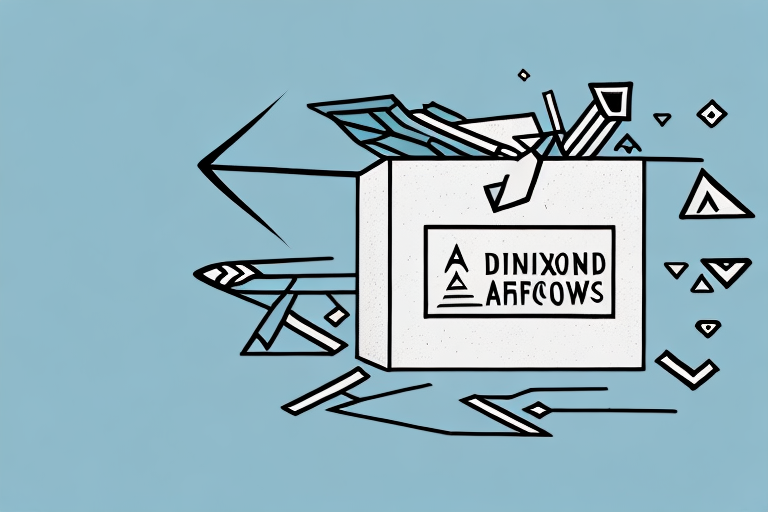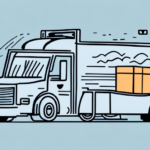Importance of Box Dimensions in Shipping
If you are involved in shipping products to customers, knowing the correct order of box dimensions is essential. It helps you choose the right size of box, pack the items correctly, and calculate the shipping fees accurately. In this article, we will explore everything you need to know about the box dimensions order for your shipping needs.
Why Box Dimensions Matter for Shipping
Box dimensions play a significant role in the shipping process. A box that is too small risks damaging the items or slipping open during transit. Conversely, a box that is too large wastes valuable space and adds unnecessary weight to the shipment, which can increase shipping costs. By understanding the correct order of box dimensions, you can select the right size box that optimizes space and protects your items during shipping.
Additionally, the fragility of the items being shipped is a crucial factor. Fragile items require extra cushioning and protection, which can take up additional space in the box. Choosing a box that allows for sufficient cushioning material without compromising the overall size and weight of the shipment is essential. Furthermore, some shipping carriers have specific size restrictions for certain types of shipments, so it's important to research and adhere to those guidelines to avoid any delays or additional fees.
The Importance of Measuring Your Packages
Before determining the dimensions order of a box, it's crucial to measure your packages accurately. Inaccurate measurements can lead to several problems, including incorrect box size selection, damages during transport, and wasted shipping costs.
One of the most significant issues arising from not measuring your packages correctly is the risk of damage during transport. If your items are not securely packaged in the correct size box, they may shift around during shipping, causing damage or breakage. This can result in costly returns, refunds, and unhappy customers.
Accurate measurements can also help you save money on shipping costs. Using a box that is too large for your items may result in paying more for shipping than necessary. Conversely, using a box that is too small might require additional packaging materials to ensure your items are adequately protected during transport.
How to Measure Your Boxes Correctly
Follow these steps to measure your boxes accurately:
- Measure Length, Width, and Height: Use a tape measure or ruler to take precise measurements of your product's length, width, and height. Round up to the nearest inch after measuring.
- Add Extra Space: Add an additional two inches to each measurement to account for packing materials or space between items.
- Record Dimensions: Write down the total dimensions in the format length x width x height.
For irregularly shaped items, measure the widest points to ensure they fit comfortably in the box. If shipping fragile items, add extra padding or cushioning to protect the items during transit. This can include bubble wrap, packing peanuts, or foam inserts. Always securely seal the box with packing tape to prevent items from falling out or shifting during shipping.
Understanding Box Volume and Weight
What Is the Volume of a Box?
The volume of a box is the amount of space it occupies. It is calculated by multiplying the three dimensions together. For example, a box that is 10 inches long, 8 inches wide, and 6 inches high has a volume of 480 cubic inches (10 x 8 x 6 = 480).
Consistent units of measurement are crucial for accurate volume calculations. Whether you measure in inches, centimeters, or another unit, ensure all dimensions use the same unit. The formula for calculating the volume of a box can also apply to other three-dimensional shapes, such as cubes or rectangular prisms.
How to Calculate the Volume of Your Packages
To calculate the volume of your packages:
- Measure Each Item: Measure the length, width, and height of each individual item in inches.
- Calculate Individual Volumes: Multiply the three measurements together for each item to determine its volume.
- Total the Volumes: Add up the volumes of all items to determine the total volume needed for the box.
Always round up to the nearest inch to ensure your package fits comfortably in the box and remains undamaged during shipping. For fragile items, add extra padding or cushioning to protect the contents. This includes materials like bubble wrap, packing peanuts, or foam inserts. The goal is to ensure your package arrives at its destination in the same condition it was in when it left your hands.
Why Weight Matters in Shipping
The weight of your package is just as important as its dimensions when it comes to shipping. Shipping carriers typically charge based on either the package's weight or its dimensions, whichever is greater. This means that if your package is lightweight but bulky, you will be charged for the size rather than the weight, which can be more expensive.
Weight restrictions may apply for certain shipping methods. For example, some carriers have a maximum weight limit for packages shipped via ground transportation. If your package exceeds this weight limit, you may need to choose a different shipping method or split your shipment into multiple packages.
The Relationship Between Weight and Dimensions
The relationship between weight and dimensions is essential to understand when shipping your products. If your package weighs more than its dimensional weight, you will be charged based on the actual weight. If your package weighs less than its dimensional weight, you will be charged based on the dimensional weight instead.
To determine the dimensional weight of your package, divide the total cubic inches by the shipping carrier's dimensional weight factor. For example, FedEx uses a dimensional factor of 139, while USPS uses different factors depending on the service.
Choosing the Right Box Size and Material
Determining the Right Box Size for Your Shipment
When choosing the right box size for your shipment, consider both the dimensions and weight of your items. Use the measurements of your items and factor in any necessary padding and packaging materials to choose the smallest box that fits without damaging your items. This approach helps you save on shipping costs and reduces the environmental impact of using excessive packaging materials.
Factors to Consider When Choosing a Box Size
- Item Weight: Heavier items may require sturdier boxes to prevent collapse during transit.
- Item Size: Ensure the box can accommodate the item with enough space for padding.
- Fragility: Fragile items need extra cushioning to protect them during shipping.
- Quantity: Consider whether the item will be shipped alone or with other items, which affects the box size needed.
Choosing the Right Packaging Material for Your Boxes
Selecting the appropriate packaging material is crucial for protecting your items during shipping:
- Bubble Wrap: Ideal for wrapping fragile items to provide cushioning.
- Packing Peanuts: Useful for filling empty spaces in boxes to prevent items from shifting.
- Foam Inserts: Provide rigid support and protection for delicate items.
- Corrugated Boxes: Durable and come in various sizes to suit different shipping needs.
Ensure that the materials used do not add excessive weight to your shipment, as this can increase shipping costs.
Common Box Sizes for Shipping and Their Uses
There are many standard box sizes available for shipping, each suitable for different types of items:
- Small Flat-Rate Boxes: Suitable for lightweight and small items like electronics or jewelry.
- Medium Flat-Rate Boxes: Ideal for medium-sized items such as books, kitchenware, or clothing.
- Large Flat-Rate Boxes: Best for larger items like appliances, bulkier clothing, or multiple smaller items.
These boxes are available from most shipping carriers and can be used for a variety of items, ensuring standardization and ease of stacking during transit.
Optimizing Shipping Costs and Best Practices
Tips for Optimizing Your Box Dimensions to Reduce Shipping Costs
- Use the Smallest Box Possible: Selecting the smallest box that fits your items helps reduce shipping costs by minimizing dimensional weight or overall package size.
- Remove Unnecessary Packaging: Eliminate excess padding or materials that add unnecessary bulk to your package.
- Consolidate Shipments: If shipping multiple items to the same destination, combine them into a single package to save on shipping costs.
- Choose the Right Carrier: Compare rates and services from different carriers to find the most cost-effective option for your shipping needs.
Best Practices for Packing Your Boxes
- Layering: Start by placing a layer of padding material at the bottom of the box.
- Positioning: Place your product in the center of the box, ensuring it doesn't touch the sides.
- Additional Padding: Add more padding around the product to fill any empty spaces and prevent movement.
- Sealing: Close the box and tape it securely with packing tape to prevent it from opening during transit.
How to Label Your Boxes Correctly
Proper labeling ensures that your packages reach their destination without issues:
- Clear Addresses: Include your return address and the recipient's address in clear, readable print. Avoid using abbreviations that might cause confusion.
- Shipping Labels: Use a shipping label generated by the carrier whenever possible, as it includes tracking information.
- Special Handling Labels: Add labels such as "Fragile" or "Handle with Care" if necessary to alert handlers of delicate contents.
- Visibility: Place labels on the top of the box where they are easily visible, and ensure they are not obstructed by seams or tape.
Common Mistakes to Avoid When Measuring and Ordering Boxes
- Not Measuring Items Before Packing: Always take accurate measurements of your items before selecting a box to ensure a proper fit.
- Incorrect Dimensions Order: Ensure you record the dimensions in the correct order: length x width x height.
- Underestimating Package Weight: Weigh your package after packing to ensure you account for the weight of both the items and the packaging materials.
- Using Inadequate Packaging Materials: Select appropriate packing materials to protect your items without adding unnecessary weight or bulk.
Conclusion
Understanding the correct order of dimensions and weight is critical when shipping your products. By measuring your packages accurately, choosing the right box size, using appropriate packing materials, and ensuring your box is securely labeled, you can optimize space, reduce shipping costs, and ensure your items arrive at their destination safely.
For more information on shipping guidelines, refer to authoritative sources such as UPS Shipping Learning Center, FedEx Shipping Services, and the USPS Shipping Guide.




















